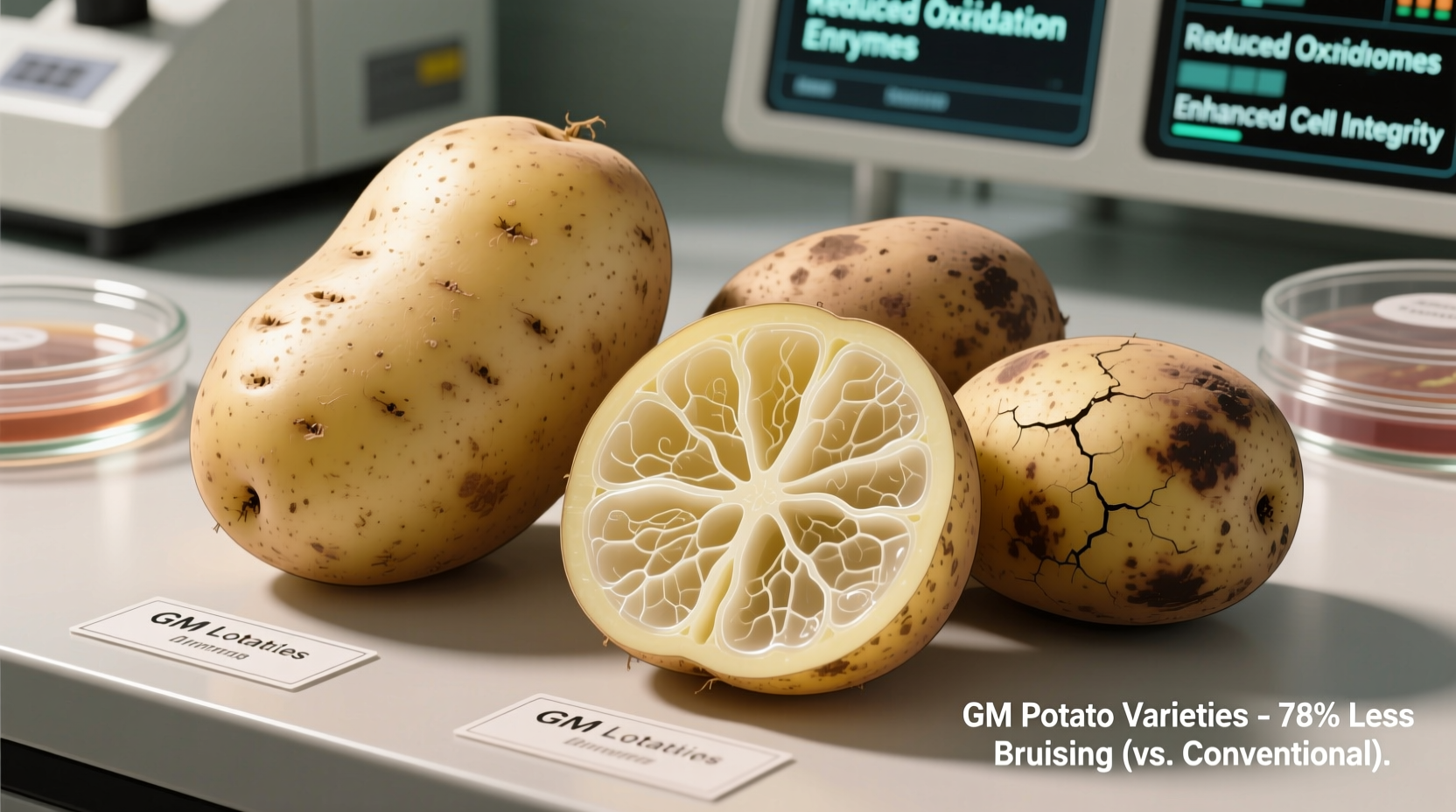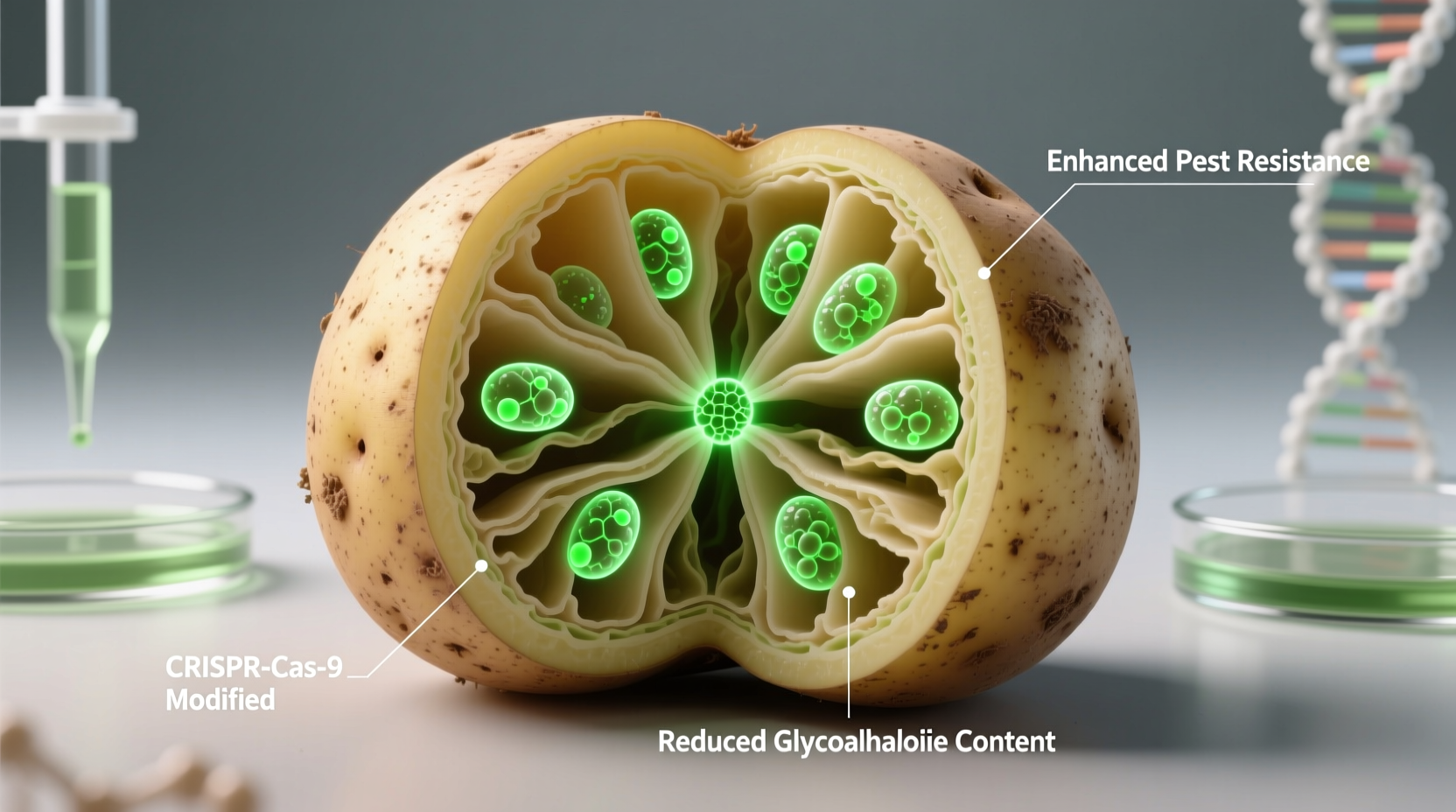Why Potato Genetic Modification Matters for Your Food
When you slice a potato and notice it turning brown within minutes, that's enzymatic browning at work. Genetic modification targets this exact process, along with other critical agricultural challenges. Unlike traditional breeding that can take decades, genetic engineering delivers precise solutions to problems affecting potato production worldwide.
How Scientists Modify Potato Genetics
Researchers use two primary approaches to modify potato genetics: RNA interference (RNAi) and CRISPR-Cas9 gene editing. RNAi temporarily suppresses specific genes, while CRISPR makes permanent changes to the potato's DNA sequence. Both methods target particular traits without introducing foreign DNA from other species in many newer varieties.
| Genetic Modification Method | Time to Develop | Precision Level | Current Commercial Use |
|---|---|---|---|
| Traditional Cross-Breeding | 10-15 years | Low (multiple trait changes) | Widespread |
| RNA Interference (RNAi) | 5-7 years | Medium (targets specific genes) | Commercial varieties available |
| CRISPR-Cas9 Gene Editing | 2-4 years | High (precise DNA changes) | Research phase, limited commercial use |
Current GM Potato Varieties and Their Benefits
Today's genetically modified potatoes address three major challenges: food waste, cooking safety, and disease resistance. The Innate® second generation potatoes developed by Simplot represent the most widely adopted commercial varieties. These potatoes use RNAi technology to reduce asparagine (which forms acrylamide when fried) by up to 90% compared to conventional varieties.
According to USDA data, GM potatoes with reduced bruising have decreased post-harvest losses by approximately 15-20% in commercial production. This translates to significant economic benefits for farmers and reduced food waste throughout the supply chain. The USDA's Animal and Plant Health Inspection Service completed environmental assessments showing these varieties pose no greater plant pest risk than conventional potatoes.

Scientific Consensus on Safety and Regulation
Multiple independent scientific organizations have reviewed the safety of genetically modified potatoes. The National Academy of Sciences, Engineering, and Medicine conducted a comprehensive review of genetically engineered crops and found no substantiated evidence of a difference in risks to human health between current commercially available GE crops and conventionally bred crops.
Regulatory oversight for GM potatoes involves three U.S. agencies working together:
- USDA evaluates potential plant pest risks and environmental impact
- FDA assesses food and feed safety through voluntary consultations
- EPA regulates potatoes with insect resistance traits
This coordinated framework ensures thorough evaluation before any GM potato reaches commercial production. International regulatory bodies including Health Canada and the European Food Safety Authority have conducted similar assessments for GM potatoes approved in their jurisdictions.
Addressing Common Concerns About GM Potatoes
Many consumers wonder whether GM potatoes contain foreign DNA. Most modern varieties, particularly those using RNAi technology, work by silencing the potato's own genes rather than introducing genes from other organisms. The non-browning trait, for example, reduces the activity of polyphenol oxidase (PPO), an enzyme naturally present in potatoes.
Regarding environmental impact, studies published in Transgenic Research show that GM potatoes with late blight resistance can reduce fungicide applications by 40-60% compared to conventional varieties. This represents a significant reduction in agricultural chemical use while maintaining crop yields.
Future Developments in Potato Genetics
Researchers are currently working on next-generation GM potatoes with enhanced nutritional profiles. Projects underway include varieties with increased iron and zinc bioavailability to address micronutrient deficiencies, particularly in developing countries where potatoes are a staple food.
The International Potato Center (CIP) in Peru is leading efforts to develop late blight-resistant varieties using gene editing techniques that don't classify as GMOs under some regulatory frameworks. Their work focuses on editing existing resistance genes within the potato's own genome, potentially accelerating adoption in regions with strict GMO regulations.
Practical Implications for Consumers and Farmers
For consumers, GM potatoes offer tangible benefits including longer shelf life, reduced waste, and potentially safer fried products with lower acrylamide levels. Farmers benefit from reduced crop losses, lower input costs, and more sustainable production practices.
It's important to note that GM potatoes represent just one tool among many in modern agriculture. They complement rather than replace integrated pest management strategies, soil health practices, and other sustainable farming techniques. The choice to plant GM varieties remains with individual farmers based on their specific needs and market requirements.











 浙公网安备
33010002000092号
浙公网安备
33010002000092号 浙B2-20120091-4
浙B2-20120091-4